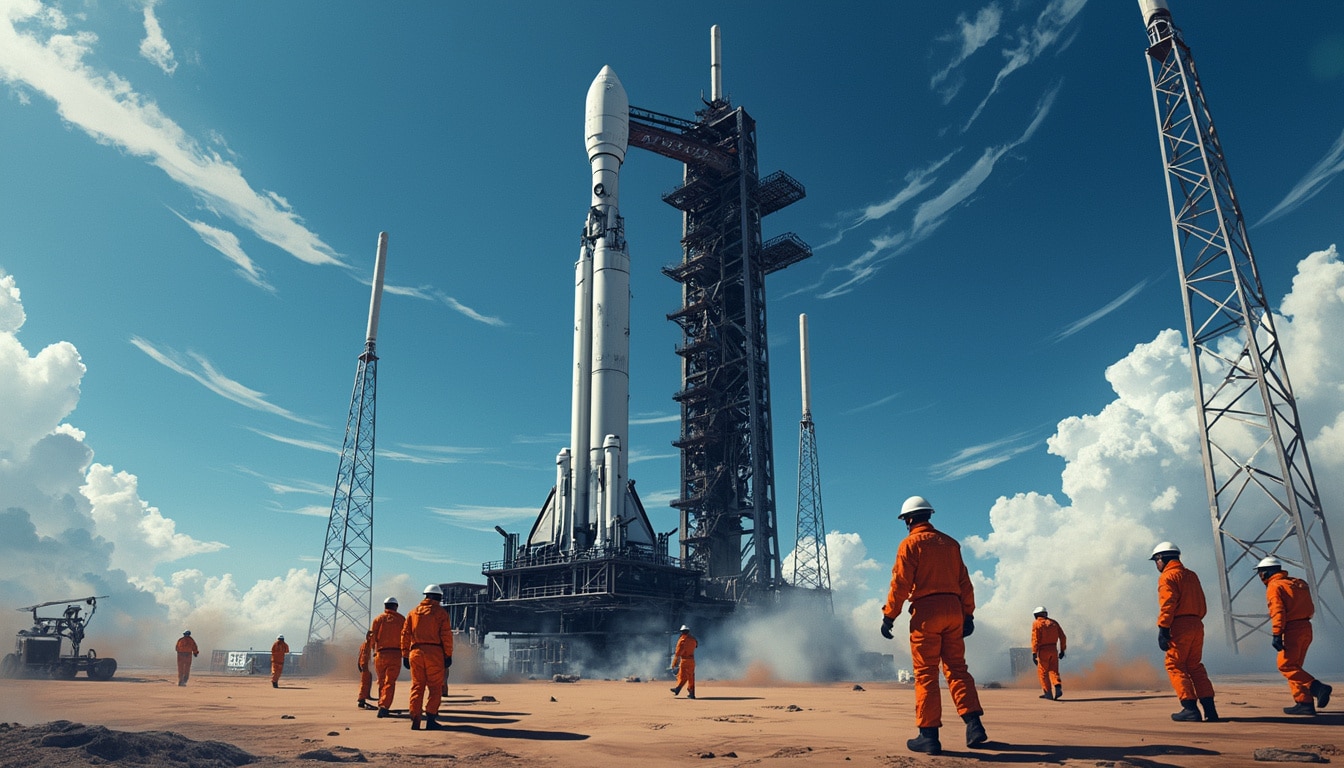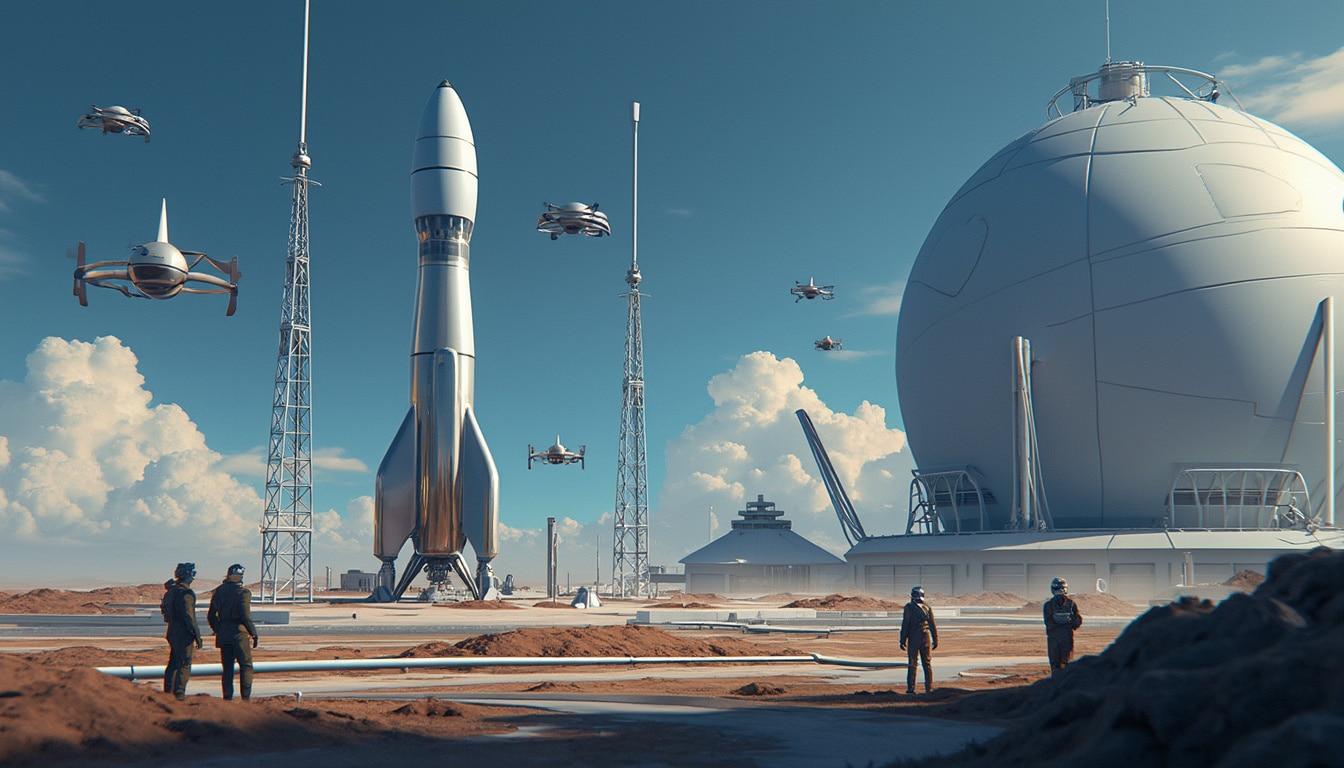The world of space exploration continues to captivate enthusiasts, and when it involves SpaceX, the stakes are undeniably high. On a recent Sunday, fans around the globe were eagerly anticipating the launch of a Falcon 9 rocket that was scheduled to deliver numerous Starlink satellites into orbit. However, just seconds before liftoff, the mission faced an unexpected hurdle that serves as a reminder of the complexities of operating within the Earth’s atmosphere. With only 11 seconds to go, an aircraft unwillingly triggered an abort of the launch, leaving spectators in suspense.
This incident has shed light on the critical importance of maintaining airspace regulations and the intricate coordination necessary between various aviation sectors. Such events could have significant ramifications for future SpaceX launches and the broader aerospace industry. Let’s delve deeper into what transpired during this launch attempt and what it means for the future of space missions.
The Countdown and the Unexpected Halt
The countdown had been progressing smoothly, with the Falcon 9 rocket poised for its critical mission. As excitement built, viewers were treated to real-time updates from the launch site, basking in the anticipation of yet another milestone for SpaceX. Just moments before the scheduled launch, the ground crew began their final checks, ensuring every system was go.
However, at the 12-second mark of the countdown, the atmosphere shifted dramatically. A voice crackled through the communication channels, announcing, ‘Hold, hold, hold!’ This brief yet critical command threw the entire operation into a state of urgency. Observers were left pondering the implications of such a decision. Was there a malfunction? A last-minute technical issue? As the seconds ticked by, it became clear that the reason for the hold was more surprising than anyone had anticipated.
According to reports, a plane had unintentionally entered the restricted airspace near the launchpad, prompting the team at SpaceX to prioritize safety over everything else. This incident serves as a poignant reminder of the challenges faced by launch coordinators. Although air traffic control teams diligently monitor airspace, unplanned incursions can occur, leading to potentially dangerous situations.

The Role of Air Traffic Control
The role of air traffic control in airspace management cannot be overstated, especially in the context of space launches. Before a launch, flight paths must be coordinated meticulously. Airspace designated for rocket launches is typically restricted to prevent civilian aircraft from entering the area, ensuring the safety of both space missions and existing aircraft.
In this case, a Delta Airlines flight was identified as a potential trespasser. Social media users speculated on the role of the commercial flight, which was en route from Los Angeles to Honolulu during the incident. The airline promptly released statements asserting that their flight had adhered to all necessary air traffic instructions and had not breached any protocols.
This situation underscores the challenges air traffic controllers encounter daily. Maintaining a safe and efficient airspace while accommodating an increasing number of commercial flights requires precise coordination and communication. Each aircraft’s location must be continuously tracked and relayed, which can be particularly difficult during high-stakes moments like a rocket launch. In addition, secondary flight paths often need to be modified unexpectedly, complicating the situation further.
Implications for Future Launches
The consequences of a scrubbed launch extend far beyond the immediate moments of disappointment felt by spectators. When a launch is postponed, it can lead to cascading effects that alter future missions and objectives. For SpaceX, this particular instance highlighted the need for enhanced communications with all aviation entities prior to future launches.
Launch windows for SpaceX are meticulously planned, often involving collaboration with both regulatory bodies and civilian air traffic control. These windows are critical, as they account for various factors, such as weather conditions and orbital alignment. Any disruption can necessitate complex logistical adjustments that might push missions back significantly.
Furthermore, consistent scrubs or postponements for similar reasons could have several broader implications on public perception of space travel. Regular updates are essential for maintaining enthusiasm and confidence. SpaceX, known for its innovative initiatives—such as the planned Starship missions to Mars—risks public skepticism if delays become commonplace.
Technical Adjustments Following Launch Scrubs
After an aborted launch attempt, the SpaceX engineering teams immediately begin analyzing conditions that led to the hold. Such assessments investigate not only technical systems and protocols but also airspace coordination measures. In this instance, discussions were initiated on how to refine airspace notifications and how real-time data is shared with commercial air traffic operators.
Enhancing communication systems and real-time data transmissions between SpaceX and civil aviation authorities can result in a more fluid operation. This leads to greater safety and reduced occurrences of airspace breaches in the future. Indeed, collaboration across sectors is crucial for the safe orchestration of upcoming launches as space missions strive towards ever more ambitious goals.
Moreover, the aerospace industry, especially during the era of rapid advancements, must prioritize safety without hindering progress. SpaceX has demonstrated its commitment to learning from each experience and continually evolving systems and processes.

The Future of SpaceX Launches
As SpaceX moves ahead, the company remains poised to push boundaries further. Despite the frustrations surrounding scrubs, the perseverance of the teams involved reinforces a long-term vision for successful missions. Each incident allows for important lessons that help refine the approach towards future missions. Advances in technology continue to support these ambitions, leading to developments that enhance project timelines and operational efficiencies.
Each successful launch not only provides tangible results such as operational Starlink satellites, but it also fuels an expanding narrative of human exploration beyond our planet. Being at the forefront of innovation places challenges before SpaceX, and overcoming these obstacles is crucial for paving the path to interplanetary endeavors.
Looking to the future, the company has laid out an aggressive roadmap that includes further missions to support NASA’s Artemis program and deep space explorations. Global challenges continue to shape the aerospace sector, emphasizing the necessity for robust systems capable of integrating different operational frameworks.
Preparing for Tomorrow’s Challenges
Preparations for future missions will incorporate lessons learned from the recent launch attempt. SpaceX’s approach focuses on adapting to the needs of the industry while ensuring the highest standards of safety are maintained. In evolving the communication protocols between space missions and air traffic control, teams seek to forge a more united front in their quest for success.
Additionally, as space tourism becomes a growing sector, the implications of launches on civilian air travel will vary. These factors create a dynamic environment in which safety and innovation coalesce, underscoring the diverse objectives that modern aerospace endeavors must accommodate.
As the realm of space exploration continues to expand, so too do the opportunities for collaboration between commercial entities, regulatory bodies, and governmental organizations. Navigating this complexity will ultimately shape the landscapes of future missions, fostering a climate conducive to exploration beyond the limits of Earth.

Public Engagement and the Role of Media
The role of media in shaping public engagement during such events is crucial. The coverage surrounding these incidents often results in heightened awareness and interest within the community. Observers continuously scour social media and news coverage to stay informed, with real-time updates often influencing public sentiment regarding space missions.
SpaceX effectively utilizes its platforms to connect with enthusiasts, bloggers, and the general population, fostering an interactive dialogue. This approach keeps consumers updated and engaged, often drawing in audiences who are not regular followers of space news.
In conjunction with traditional outlets, social media channels provide a unique opportunity for public engagement. The streaming of launches and live updates creates shared experiences for those unable to attend personally. Additionally, direct interactions through Q&A sessions or anecdotes shared by the teams help demystify the industry for the curious general public.
The Importance of Communication
The accountability observed during these events also stems from the transparency displayed by SpaceX regarding updates and incidents. Inclusiveness in disseminating information enhances trust between the company and its audience. By sharing challenges encountered, lessons learned, and solutions implemented, SpaceX establishes relatable narratives that bridge the gap between space exploration and everyday life.
Crafting these messages effectively promotes a culture of curiosity and excitement, attracting audiences while fostering a sense of belonging. Such transparency is vital for sustaining interest among enthusiasts, researchers, and potential investors.
In the end, as SpaceX broadens its initiatives and continues to push boundaries, the ongoing dialogue surrounding launches—successful or otherwise—ensures that space missions resonate with a broader audience, encouraging even those outside aerospace to venture into the mysteries of the universe.




Leave a Reply